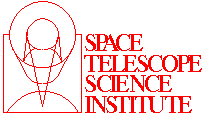
_____________________________________________________________

_____________________________________________________________
The Hubble Constant (H0) is one of the most important numbers in cosmology
because it is needed to estimate the size and age of the universe.
This long-sought number indicates the rate at which the universe is expanding, from the primordial "Big Bang".
The Hubble Constant can be used to determine the intrinsic brightness and masses of stars in nearby galaxies, examine those same properties in more distant galaxies and galaxy clusters, deduce the amount of dark matter present in the universe, obtain the scale size of faraway galaxy clusters, and serve as a test for theoretical cosmological models.
In 1929, American astronomer Edwin Hubble announced his discovery that galaxies, from all directions, appeared to be moving away from us. This phenomenon was observed as a displacement of known spectral lines towards the red-end of a galaxy's spectrum (when compared to the same spectral lines from a source on Earth). This red shift appeared to have a larger displacement for faint, presumably further, galaxies. Hence, the farther a galaxy, the faster it is receding from Earth.
The Hubble Constant can be stated as a simple mathematical expression, H0 = v/d, where v is the galaxy's radial outward velocity (in other words, motion along our line-of-sight), d is the galaxy's distance from earth, and H0 is the current value of the Hubble Constant.
However, obtaining a true value for H0 is very complicated. Astronomers need two measurements. First, spectroscopic observations reveal the galaxy's red shift, indicating its radial velocity. The second measurement, the most difficult value to determine, is the galaxy's precise distance from earth. Reliable "distance indicators", such as variable stars and supernovae, must be found in galaxies. The value of H0 itself must be cautiously derived from a sample of galaxies that are far enough away that motions due to local gravitational influences are negligibly small.
The units of the Hubble Constant are "kilometers per second per megaparsec". In other words, for each megaparsec of distance, the velocity of a distant object appears to increase by some value. (A megaparsec is 3.26 million light-years). For example, if the Hubble Constant were determined to be 50 km/s/Mpc, a galaxy at 10 Mpc would have a red shift corresponding to a radial velocity of 500 km/s.
The value of the Hubble Constant initially obtained by Edwin Hubble was around 500 km/s/Mpc, and has since been radically revised because initial assumptions about stars yielded underestimated distances.
For the past three decades, there have been two major lines of investigation into the Hubble Constant. One team, associated with Allan Sandage of the Carnegie Institutions, has derived a value for H0 around 50 km/s/Mpc. The other team, associated with Gerard DeVaucouleurs of the University of Texas, has obtained values that indicate H0 to be around 100 km/s/Mpc. A long-term, key program for HST is to refine the value of the Hubble Constant.
For more information, and images, link to
Cepheid Variables in M100
(HubbleSite - NewsCenter - Background information)
For more information, link to
HST findings shed new light on the fate of the Cosmos
(in the Web site of Science@NASA)
Recent investigations have found that the expansion rate of the cosmos began speeding up about five to six billion years ago.
See ARVAL - Hubble Finds Evidence for Dark Energy in the Young Universe.
![]() Updated: November 19 '06, March 22 '13
Updated: November 19 '06, March 22 '13
Best seen with MS Internet Explorer.
Back: STScI - Background Information
Messages: